Chapter Eight: Instrumental Conditioning (Stimulus Control)
1/20
There's no tags or description
Looks like no tags are added yet.
Name | Mastery | Learn | Test | Matching | Spaced |
|---|
No study sessions yet.
21 Terms
Stimulus Control
Ways in which instrumental behavior (actions and consequences) comes under the control of particular stimuli. Many of these concepts are very similar to what we discussed with classical conditioning.
Many behaviors are subject to stimulus control. The stimulus context in which a response is performed is important. In fact, failure to use appropriate stimulus control is often considered abnormal.
Examples:
• Undressing in your bedroom versus a public place.
• Staring at the TV when it is on versus when it is off.
• Talking when you have an audience versus when you don’t.
• Students studying during Fall break. The stimuli present on campus is very different than the ones present on break…end up doing very little studying over break.
How can we tell that a behavior has come under the control of certain stimuli?
Pigeons can peak at a red circle with a white triangle inside to receive food. Then, the pigeons can pick the red circle OR the white triangle to peak.
What do these results tell us?
1. The degree of differential responding (responding differently to each stimulus) tells us the degree of control that stimulus has over the behavior. Example: Pigeon 107 responded more to the red circle than the white triangle, which means the red circle controls the response.
2. Differential responding to two stimuli indicates that the subjects are treating each stimulus as “different” from the other. This is called stimulus discrimination. Example: Pigeon 107 responded more to the red circle than the white triangle, which means it sees the red circle and white triangle as two different things.
3. One can not predict which stimulus will control responding. Example: The red circle controlled pecking behavior in pigeon 107, while the white triangle controlled pecking in pigeon 105.
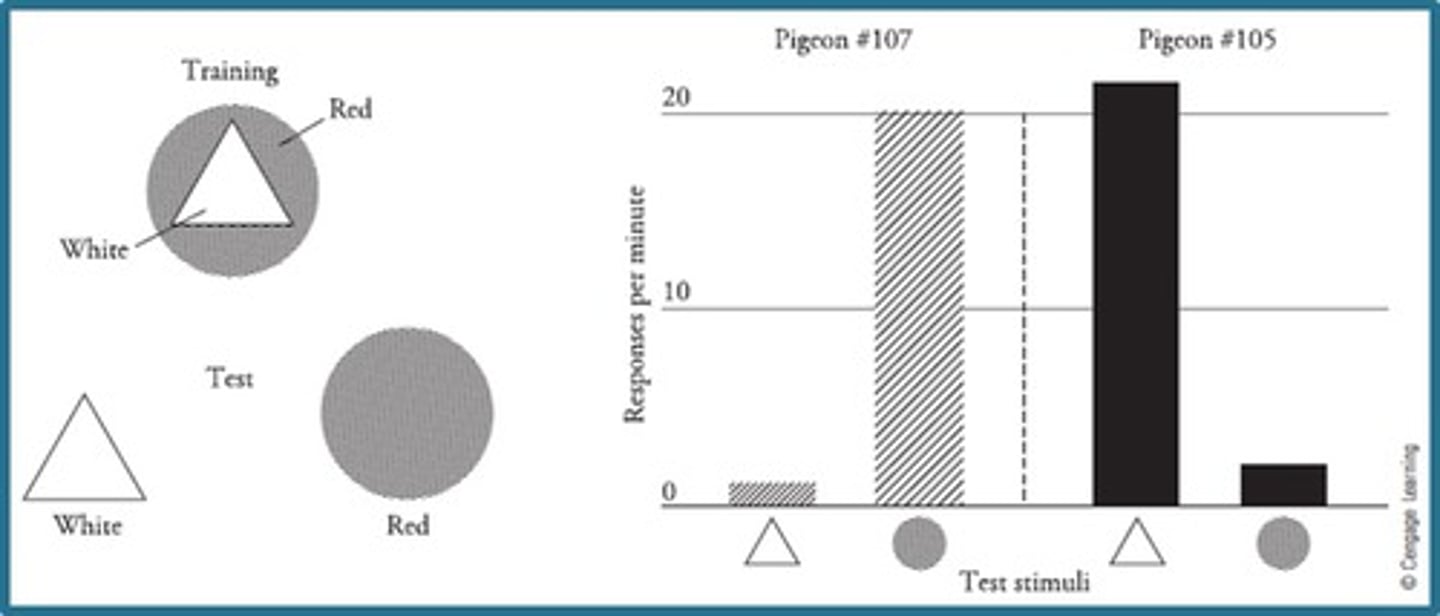
Differential Responding
Responding in different ways or at different rates in the presence of different stimuli.
Stimulus Discrimination
A differentiation between two similar stimuli when only one of them is consistently associated with the unconditioned stimulus.
The tendency to stop making a generalized response to a stimulus that is similar to the original conditioned stimulus because the similar stimulus is never paired with the unconditioned stimulus.
Ex. Taking an exam to choose the right answers, circle the right answer vs. wrong answer (choosing between very similar answers)
Stimulus Generalization
An organism responds in a similar fashion to two or more stimuli. This is the opposite of stimulus discrimination and/or differential responding.
An organism responds in a similar fashion to two or more stimuli.
Ex. Pigeon peaks to a green light. Light changes to a blue-green. Pigeon still peaks to a blue-green light.
Stimulus Generalization Gradient
Measures stimulus control; provides precise information about sensitivity of behavior to systematic stimulus variations.
- Steep generalization gradient indicates strong control of behavior by the stimulus.
- Flat generalization gradient indicates weak or nonexistent stimulus control.
The generalization gradient for S+ will be steeper (more stimulus control) when the S- is similar to the S+ during training.
Example:
Learning Flags
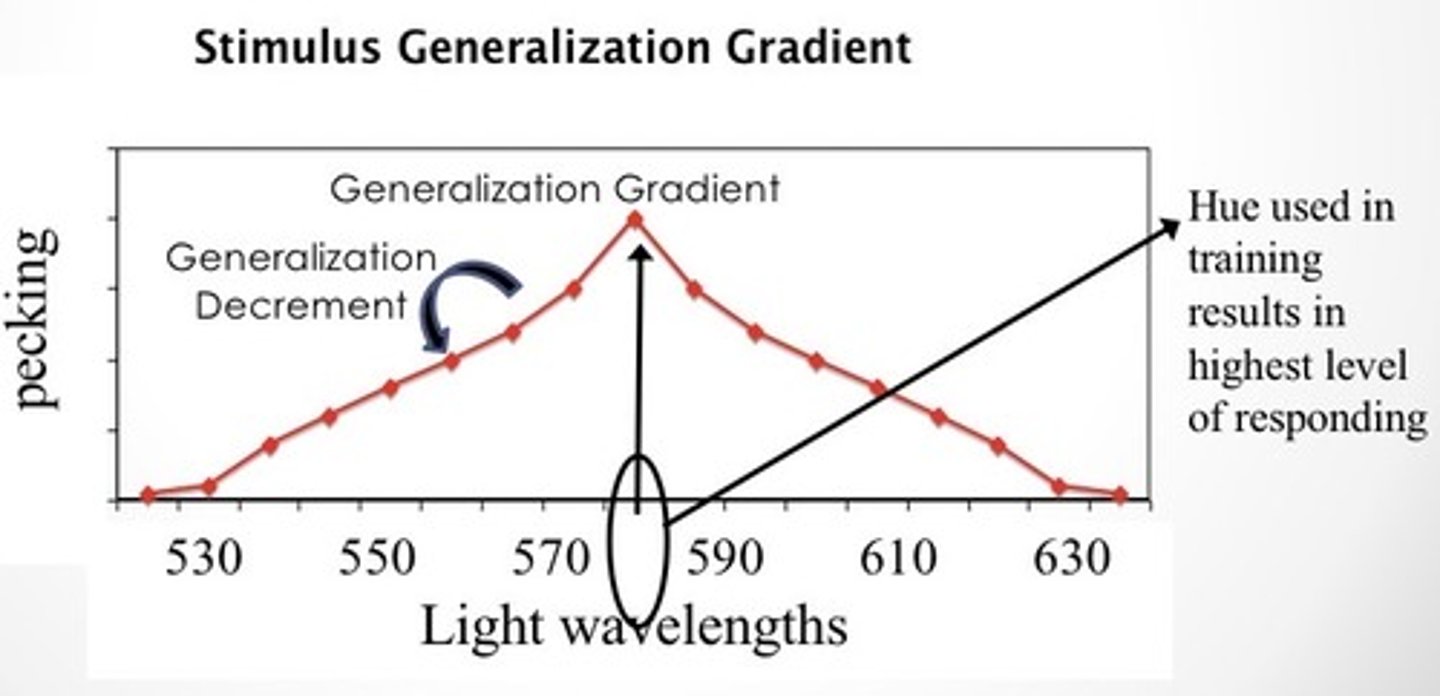
What would the stimulus generalization gradient look like for a color blind pigeon?
Flat gradient - The pigeon can not distinguish one hue from another and therefore responds the same to all hues
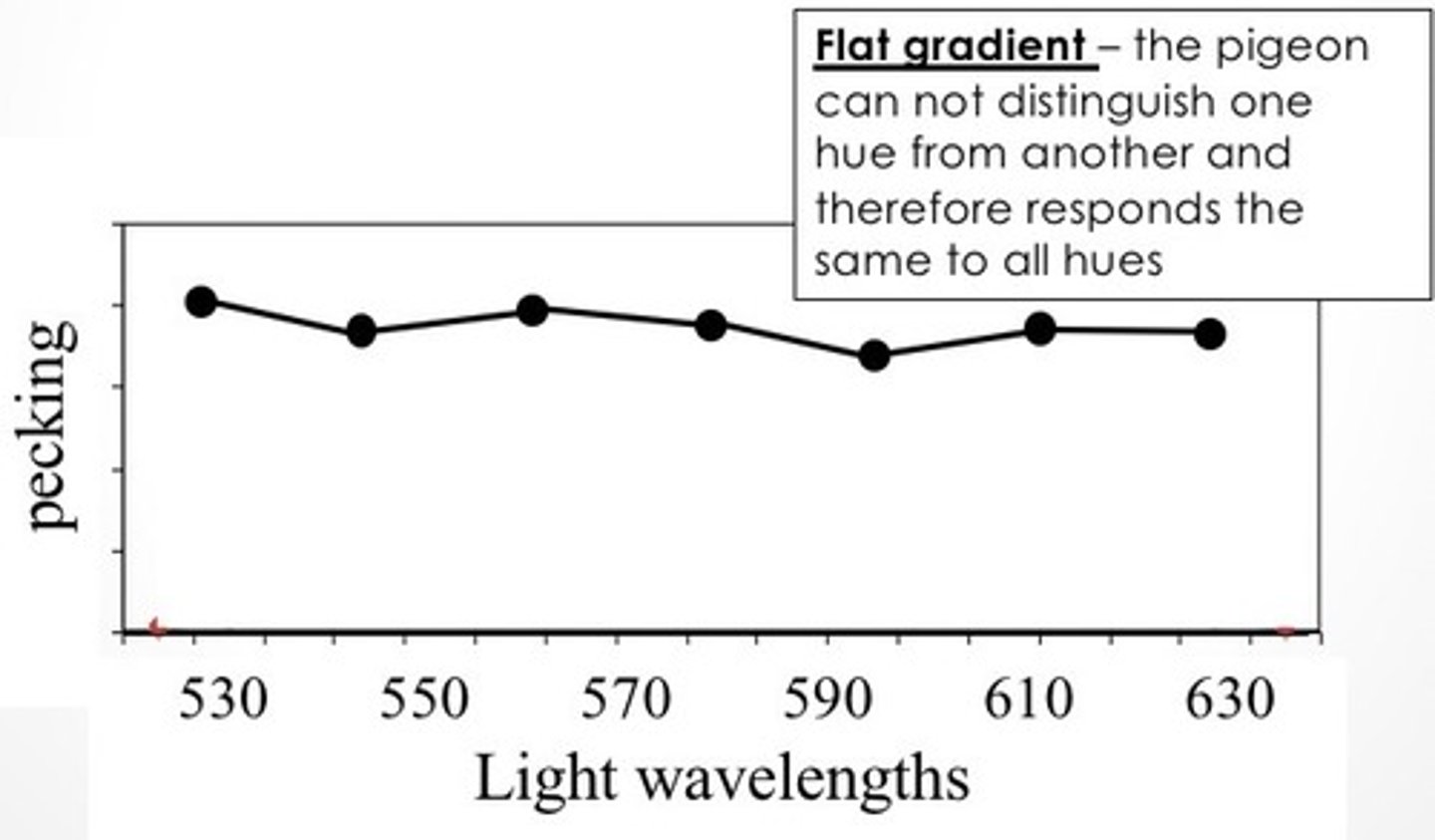
Why is stimulus control and stimulus generalization important to study?
Behavioral Training and Generalization
- Tells and reveals to us what stimuli reveals different responses to people
Examples:
- Extinguish fear of flying on one type of plane...you want that learning to generalize to other planes.
- Autistic child learns communication skills in the classroom, you want that to transfer to other locations and other people.
Factors that Affect Stimulus Control
1. Properties of the Stimulus
- Sensory capacity and orientation
- Ease of conditioning (ex. salience)
2. Type of reinforcement
3. Learning factors
- Stimulus discrimination training
Properties of the Stimulus: Sensory Capacity and Orientation
Physical limits of what our sensory systems can perceive (ex. humans cannot perceive sounds above 20,000 Hz).
- This is the most obvious variable that determines whether a particular stimulus feature controls responding. Sensory capacity determines which stimuli are included in an organism's sensory world.
- Sensory capacity sets limit on what stimuli can control behavior.
- Studies of stimulus control are often used to determine what the organism is/is not able to perceive.
Example: Can horses see color?
Properties of the Stimulus: Ease of Conditioning
Some stimuli are easier to notice, identify, encode, and remember. Those stimuli with noticeable and memorable features will be easier to condition.
Ex. Flags (colors, letters, symbols, etc.)
Remember Overshadowing?
Ease of Conditioning: Overshadowing
A more salient stimulus will overshadow learning about a less salient one.
How strongly organisms learn about one stimulus depends on how easily other cues in situations can become conditioned.
Example:
How do People Learn to Get Around Town?
People/animals use a variety of different stimuli to find their way around (ex. beacons, landmarks, and spatial or geographical cues).
Availability of one type of cue (ex. prominent landmark) can overshadow learning about other types of spatial information.
Type of Reinforcement
Development of stimulus control depends on reinforcement use.
Certain types of stimuli more likely to gain control over instrumental behavior in appetitive rather than in aversive situations.
Example: Pigeons were trained to treadle-press in the presence of a light-tone compound stimulus.
Light-Tone = Reinforcement
No Light-Tone = No Reinforcement
Grp 1: Reinforcement = Food (appetitive stimulus)
Grp 2: Reinforcement = No Shock (avoiding aversive stimulus)
Test: How does each grp respond to Light alone? Tone alone?
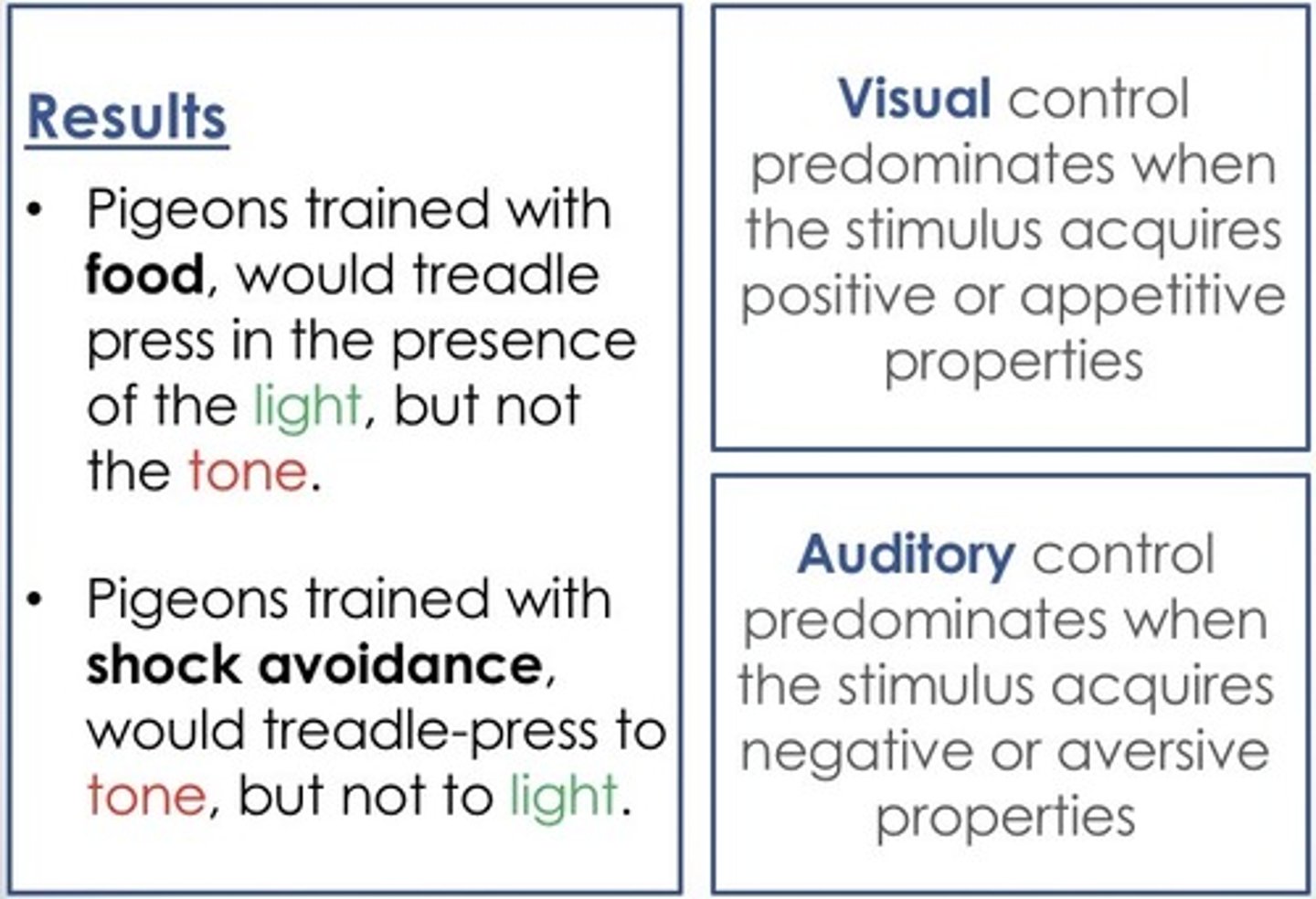
Learning Factors: Stimulus Discrimination Training
Experience with stimuli (learning about them) may determine the extent to which those stimuli come to control behavior.
SD or S+ = The stimulus that signals reinforcement available.
SΔ or S- = The stimulus that signals reinforcement is not available.
Example:
Green Light present (S+): Cross the Street - Praise
Red Light present (S-): Cross the Street - No Praise
Depends on how the stimuli are presented. We can rapidly learn to distinguish the S+ from the S- if they are presented together (simultaneously), but have a harder time if the stimuli are presented sequentially.
Example:
S+ = Peck on Female Face -> Food
S- = Peck on Male Face -> No Food
Grp 1: S+ and S- are shown at the same time.
Grp 2: S+ and S- trials are shown one at a time.
Pigeons learn quickly to distinguish between male and female faces if they are presented side-by-side. It takes much longer if they are shown one at a time.
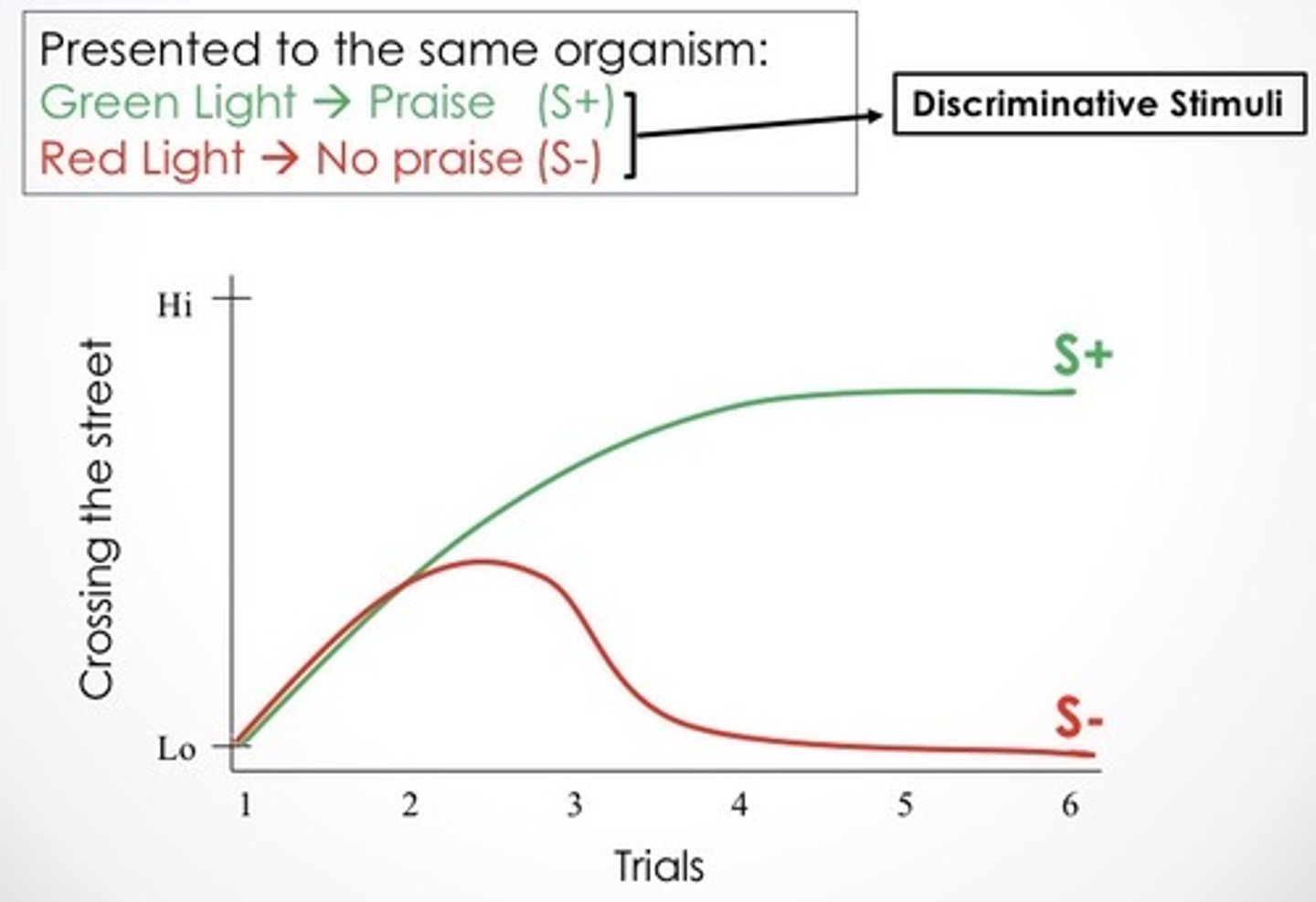
Stimulus Control: Discrimination Training
When the S+ and S- are dissimilar during training, participants find it difficult to discriminate between the S+ and other stimuli that are similar (flat generalization gradient).
When the "wrong" response (S-) is very similar to the correct response (S+), participants will learn to respond only to the S+ and not respond to anything even slightly dissimilar (steep generalization gradient).
Stimulus Control: Interoceptive Cues
Stimulus control studies show us that organisms are more likely to perform a behavior when the control stimulus is present, and less likely to perform that behavior when the control stimulus is not present.
So far, the studies we have discussed use external cues as control stimuli (such as lights and tones).
But can internal cues also function as stimuli that control when we perform a response?
Internal cues - interoceptive stimuli
Example:
Interoceptive cue: hunger
When hunger is present (S+), we eat
When hunger is not present (S-), we don't eat
Are there other interoceptive cues that might control our behavior?
Research says yes
Example:
Interoceptive cue: drug withdrawal
When withdrawal is present (S+), we seek drug
When withdrawal is not present (S-), we don't seek drug
Stimulus control is a major part of many theories regarding drug-seeking, drug-taking and addiction.
Stimulus Control: Discrimination Training & Interoceptive Cues (Drug Discrimination Training)
Researchers use discrimination training of drug-related interoceptive cues to determine whether a new drug "feels" the same as an established drug.
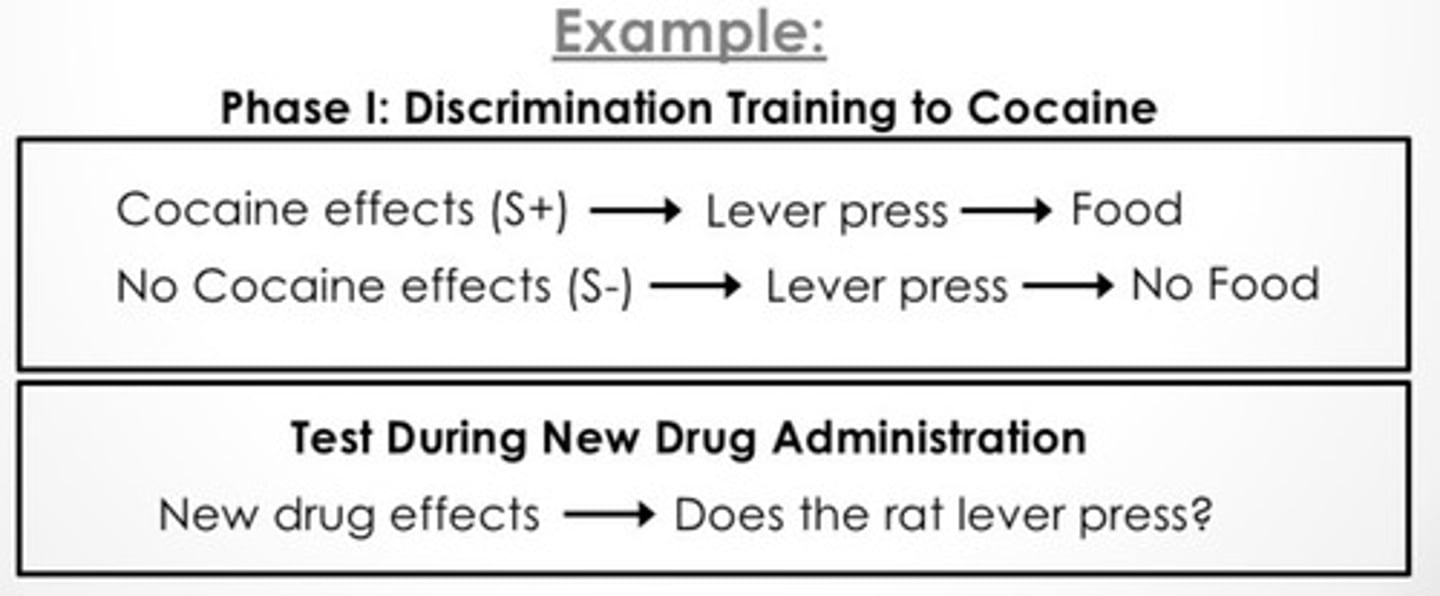
What is Learned during Discrimination Training?
Theory 1: Learn to respond when S+ is present. Do not respond at any other time. Organisms learn about S+, but learn nothing about S-.
Theory 2: Learn to suppress responding when S- in present. Respond at any other time. Organisms learn about S-, but learn nothing about S+.
Theory 3: Learn to respond during S+ and learn to suppress responding during S- (both 1 and 2). Organisms are encoding information about both S+ and S-.
Discrimination Training: Kenneth Spence
Kenneth Spence was an advocate for theory #3.
Proposed the following study:
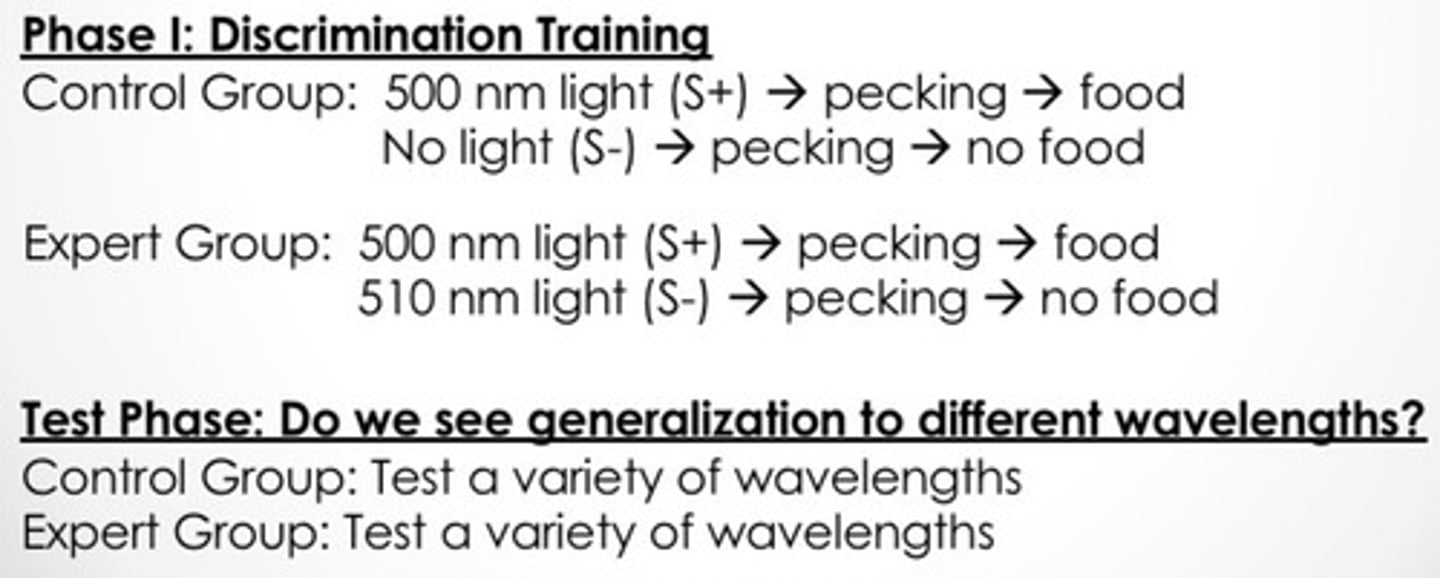
Kenneth Spence: Evidence for Theory Three
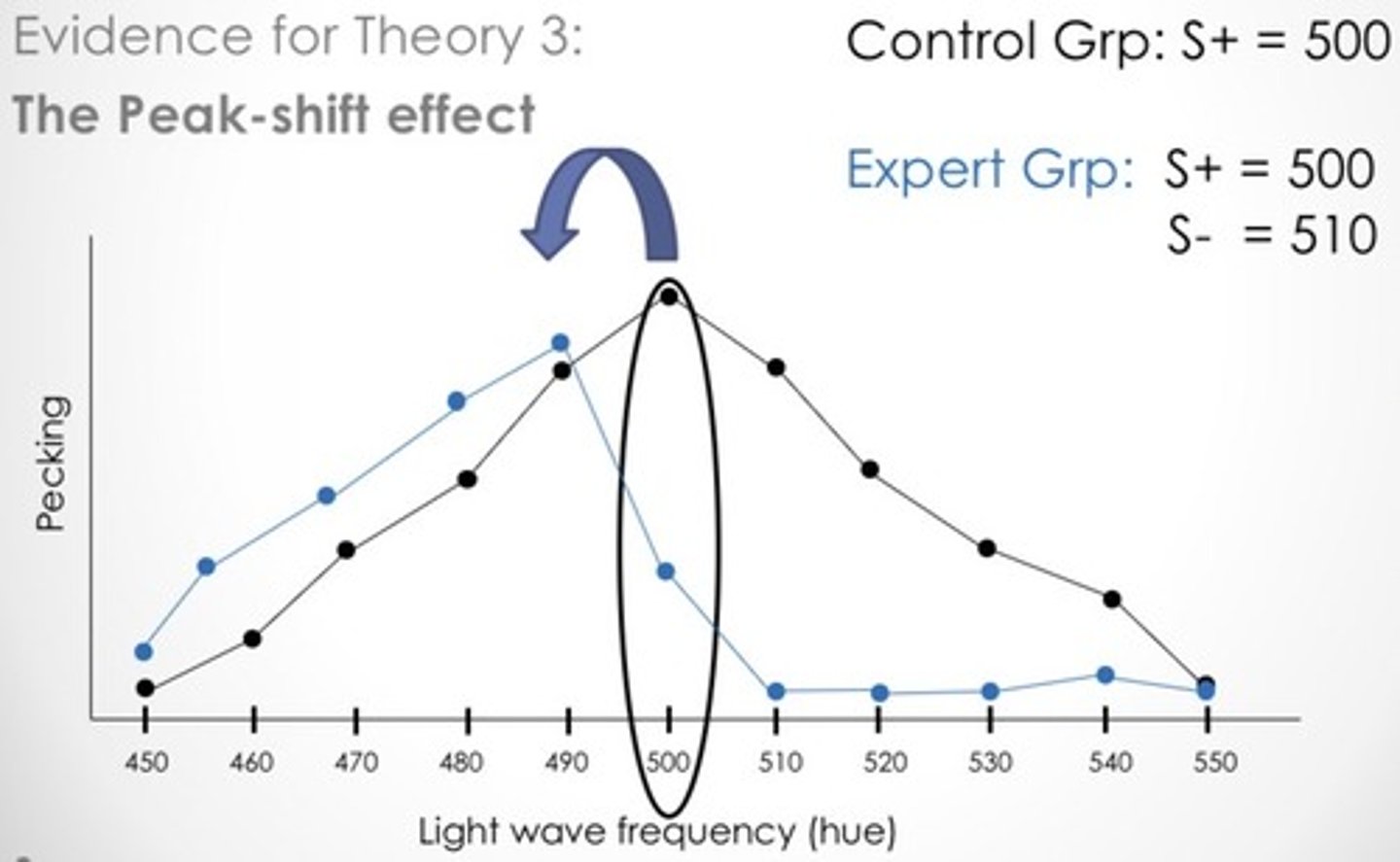
Peak Shift Effect
When S- is very close to S+ (on an intradimensional scale), the inhibitory properties of S- will generalize to the S+, causing responding to the S+ to decrease relative to stimuli that are farther down the scale.
In other words, the peak level of responding is not to S+ (as you would expect), but rather peak responding is shifted away from the S- side.
For this to happen, animals must learn about S+ and S-, not just one or the other!